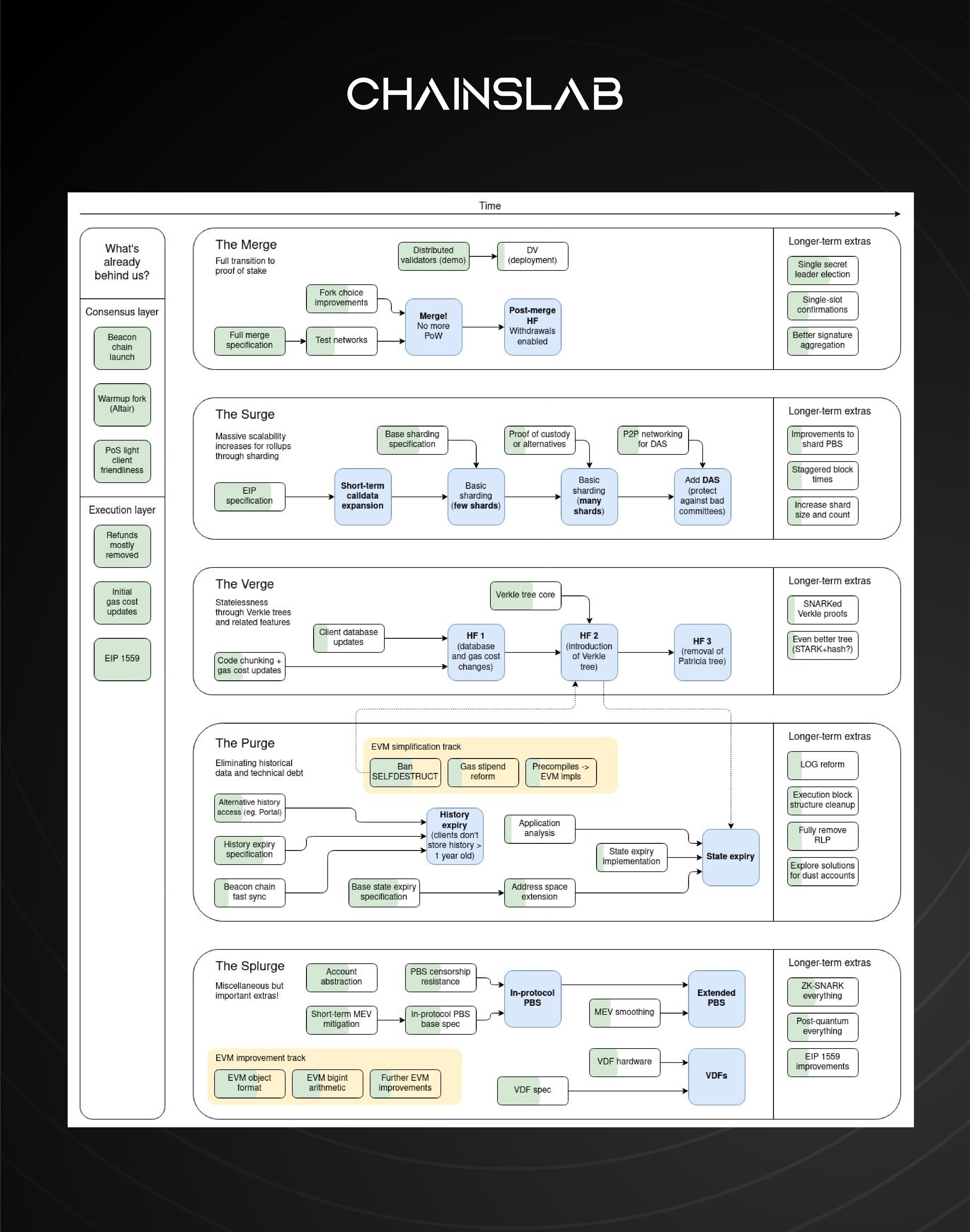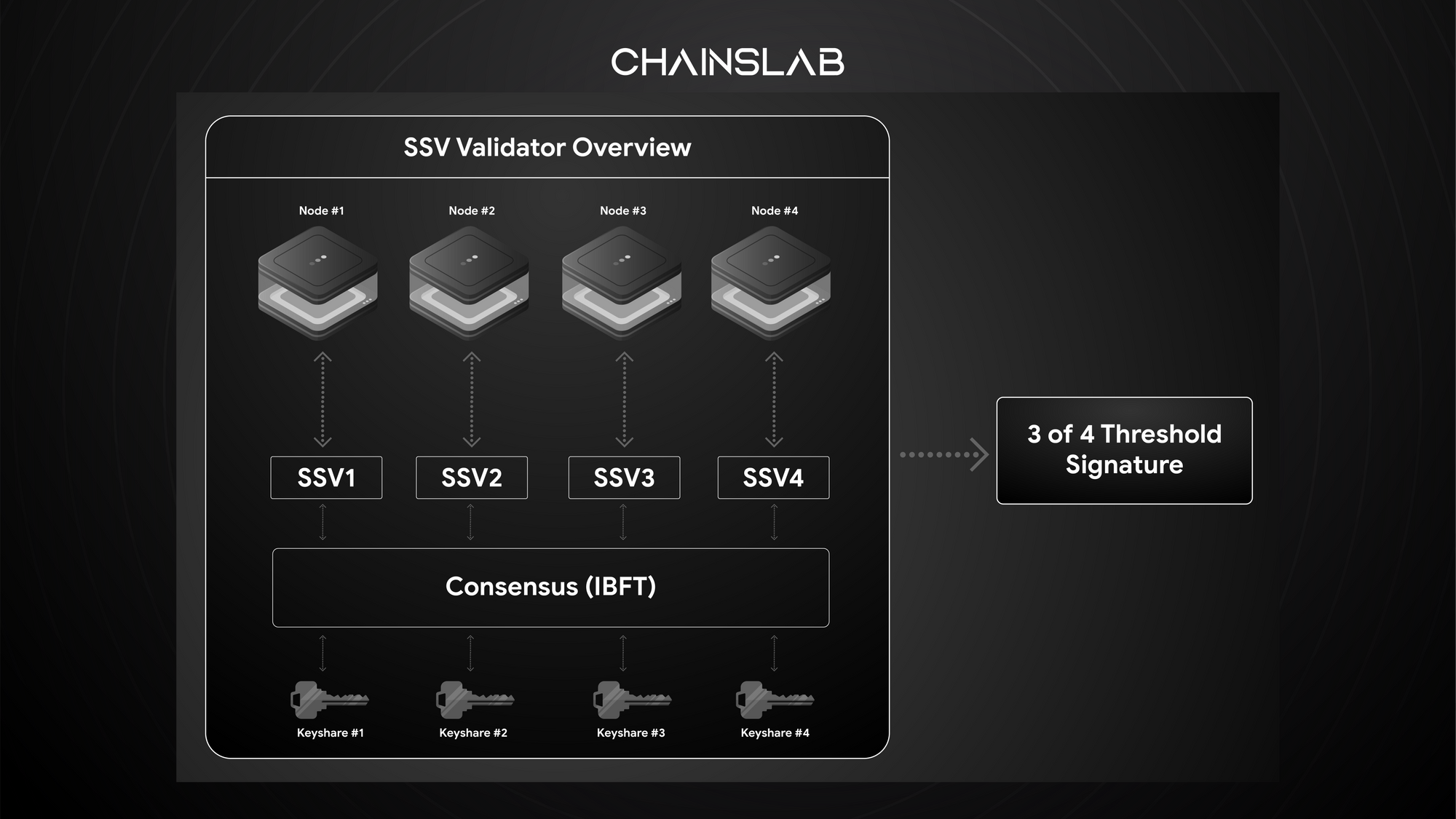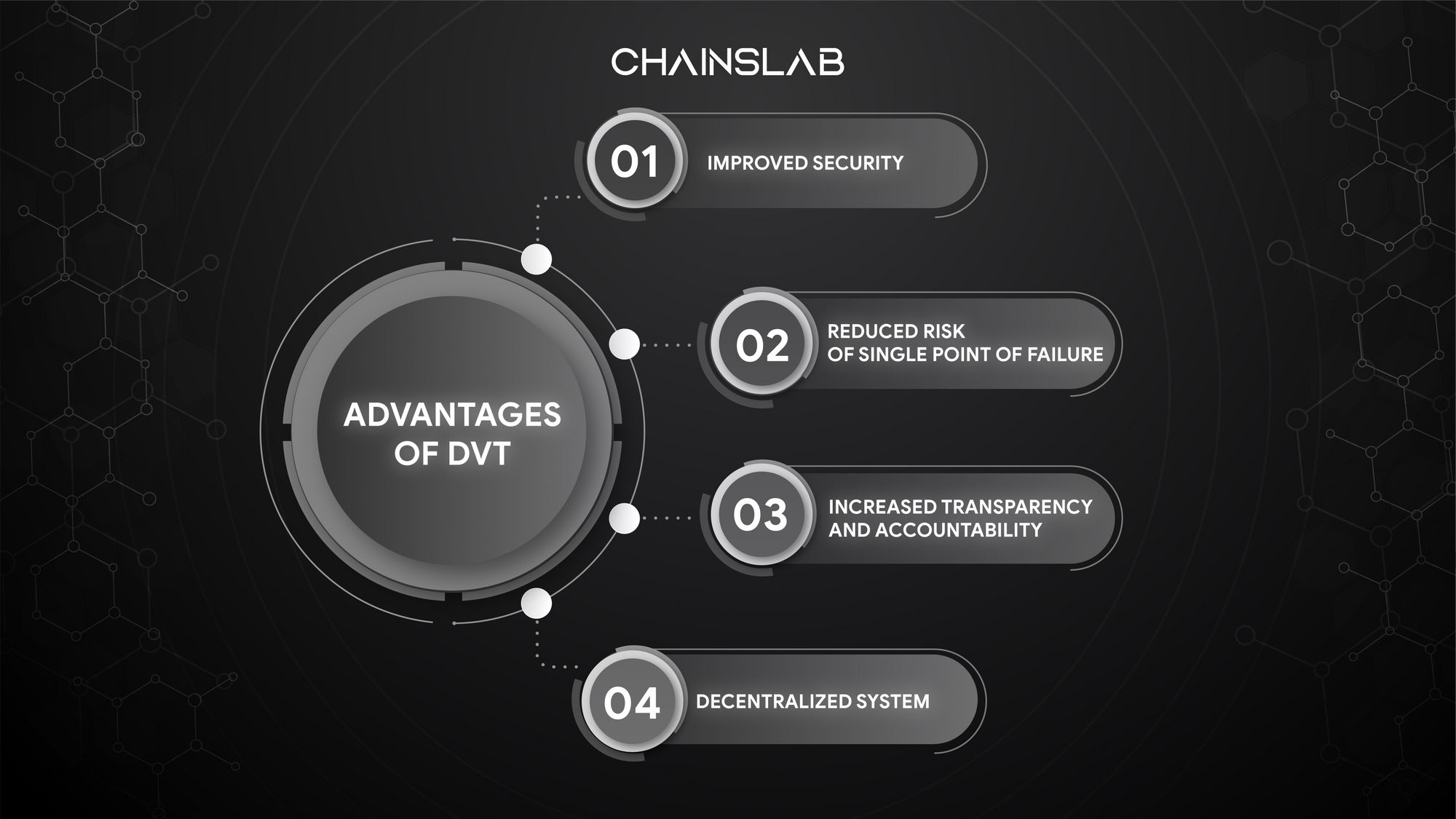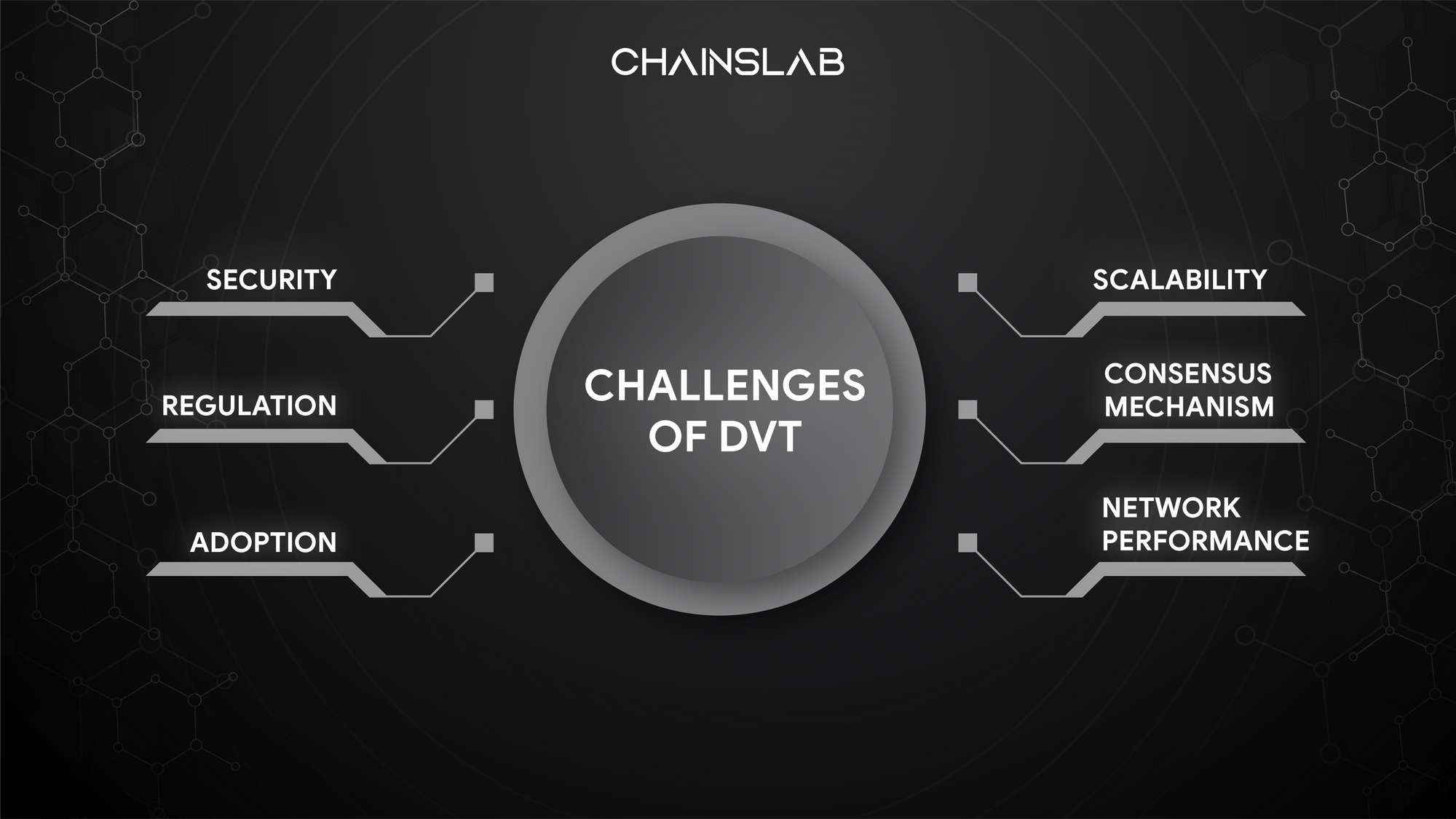The most recent successful upgrade The Merge has brought many benefits to Ethereum maximalists, making the network less energy-intensive and more independent in economic security. However, amid the various sakes that The Merge appears to have yielded, threatened by centralization is beginning to rear its ugly head. And the next big thing on The Merge section of Ethereum roadmap is where the Distributed Validator Technology jumps in and fragmentizer most of the issues that are associated with this threat.

Why is Distributed Validator Technology necessary? As the proof-of-stake consensus, validators need to confirm and propose new blocks to the blockchain and theoretically speaking, anyone who meets requirements can set up their own validator node and participate in the blockchain. But so far, the entry to become a validator is still quite far from real demand on markets. Several intending validators are instead going through third-party services, contributing their assets on staking pools allowing protocols to drive into the network via and transfer all risks to depositors. It is called Liquid Staking Derivatives.
In Web2, the power of industry is in one entity’s hand. In Web3, once again, assets are in one protocol’s hand. So, in this article, we’ll go through the risk of becoming validators and stakers and how it can be solved by the Distributed Validator Technology.
II. What is Distributed Validator Technology (DVT)?
Distributed Validator Technology is a decentralized system where multiple entities validate and record transactions on a blockchain network. It operates on a consensus mechanism, where all participants agree on the validity of transactions and update the blockchain accordingly. This approach enhances the security and reliability of the blockchain, as the ledger is maintained by multiple actors instead of a single entity.
In a traditional centralized system, a single entity holds the power to validate and maintain the ledger. In contrast, DVT operates in a decentralized manner, where multiple participants work together to validate and update the blockchain. This decentralized approach reduces the risk of a single point of failure and enhances security, as the validation process is spread across multiple participants.
The term "distributed" refers to the decentralization of the validation process, while "validator technology" refers to the underlying technology used to validate and record transactions on a blockchain. The validators in a distributed validator technology system are incentivized to participate in the validation process and maintain the accuracy of the blockchain. The consensus mechanism used in a distributed validator technology system ensures that all participants agree on the validity of transactions, and the blockchain is updated accordingly.
Purposes of Distributed Validator Technology
Distributed Validator Technology was designed with the aim of providing a decentralized solution for validating and recording transactions on a blockchain network. The primary purposes of this technology are to enhance security, reduce the risk of a single point of failure, promote transparency, and increase accountability in the validation process. By decentralizing the validation process, the network becomes less vulnerable to attacks, and the reliability of the system is increased. Additionally, the consensus mechanism used in a distributed validator technology system ensures that all participants agree on the validity of transactions and promotes transparency and accountability in the validation process.
Another key purpose of distributed validator technology is to reduce the risk of a single point of failure. In a centralized system, a single entity holds the power to validate and maintain the ledger, making the system vulnerable to failures if that entity goes offline. In a distributed validator technology system, multiple participants work together to validate and update the blockchain, reducing the risk of a single point of failure and increasing the reliability of the system. The decentralized approach to validation also enhances transparency, as the blockchain is maintained by multiple actors, and the ledger is publicly accessible. The consensus mechanism used in a distributed validator technology system promotes accountability in the validation process, ensuring that all participants agree on the validity of transactions.
Significance of Distributed Validator Technology in Blockchain
The significance of DVT in blockchain lies in its ability to make the validation process more secure, reliable, and transparent. By decentralizing the validation process and using a consensus mechanism, the risk of a single point of failure is reduced and the security of the blockchain network is enhanced. This also promotes accountability and transparency, as all participants agree on the validity of transactions and the ledger is publicly accessible. The use of Distributed Validator Technology in blockchain helps to build trust in the technology and increases its potential for wider adoption and use in various industries.
II. How does Distributed Validator Technology improve staking on Ethereum?
Centralization is sufficient to defeat the purpose of a permissionless and transparent blockchain, but the threats to security and loss of deposits due to penalties are enough to discourage anyone from participating. These issues have created the need for the development of Distributed Validator Technology.

DVT not only shares a single validator's duties across several machines but also “distributes” its private keys. Remember, Ethereum requires a validator to create or sign messages with its private keys on a single computer. By distributing shares of the private key among multiple nodes and utilizing a distributed key generation scheme, DVT eliminates the single point of failure.
DVT allows validation to be performed together with clusters of nodes instead of only as single, standalone validator nodes. By removing single points of failure, DVT enables validators to operate with active redundancy while not increasing slashing risk. DVT acts as a decentralizing force on the entire Ethereum network while adding resiliency and reducing risk.
III. Advantages of Distributed Validator Technology

- Improved Security
DVT improves security in a blockchain network by decentralizing the validation process, reducing the risk of a single point of failure, and promoting transparency and accountability through the use of a consensus mechanism. This results in a more secure and reliable blockchain network that is less vulnerable to attacks.
- Reduced Risk of Single Point of Failure
DVT reduces the risk of a single point of failure in a blockchain network. It works by having multiple participants validate transactions and maintain the ledger, instead of relying on a single entity. This decentralized approach increases the reliability of the system, as the network remains operational even if one or more participants go offline.
- Increased Transparency and Accountability
DVT increases transparency and accountability in blockchain through the use of a consensus mechanism and a decentralized validation process. The consensus mechanism ensures all participants agree on the validity of transactions, while the decentralized nature of the process promotes transparency by making the ledger publicly accessible and equally accessible to all participants. This helps build trust in the technology and validation process.
- Decentralized System
DVT in a decentralized system provides advantages in security, reliability, transparency, accountability, and resilience. It reduces risk of single point of failure with multiple participants validating transactions and maintaining the ledger. The consensus mechanism ensures validity of transactions and public access to the ledger promotes transparency and accountability. The decentralized approach also ensures the network remains operational even if some participants go offline. The use of DVT in a decentralized system therefore significantly improves the security, reliability, transparency, accountability, and resilience of the system.
IV. Challenges of Distributed Validator Technology

- Scalability
As more participants join the network, the complexity of the validation process increases, making it more difficult to maintain high levels of performance and security.
- Consensus Mechanism
The consensus mechanism used in Distributed Validator Technology must be secure, efficient, and transparent, while balancing the needs of the network with the interests of individual participants.
- Network Performance
As the network grows, it becomes more challenging to maintain a consistent level of performance, as the validation process becomes more complex and data storage requirements increase.
- Security
As with any decentralized system, the security of the network is dependent on the security of individual participants. This can present a challenge in ensuring the overall security of the network, particularly in the presence of malicious actors.
- Regulation
The decentralized nature of Distributed Validator Technology may make it difficult to regulate and enforce existing laws and regulations, presenting challenges for governments and other stakeholders.
- Adoption
The widespread adoption of Distributed Validator Technology requires overcoming challenges in education and understanding, as well as overcoming the trust issues associated with new and emerging technologies.
These challenges must be addressed in order to fully realize the potential of Distributed Validator Technology and ensure its widespread adoption and use in a variety of applications.
V. Future of Distributed Validator Technology
The future of DVT looks promising with potential applications in a variety of industries. One area where it is likely to see significant growth is in the field of Decentralized Finance (DeFi). DeFi is an emerging trend in finance where financial services are provided in a decentralized and trustless manner, leveraging the security and transparency of DVT. The use of DVT in DeFi has the potential to increase accessibility to financial services, reduce the cost of traditional financial services, and provide users with greater control over their financial assets.
Another area where DVT is likely to have a significant impact is in supply chain management. Distributed Validator Technology can provide a secure and transparent way to track the movement of goods and materials through the supply chain, increasing transparency and accountability. This could lead to a more efficient and sustainable supply chain, as well as improved transparency and trust between stakeholders. Additionally, DVT may play a role in enabling more secure and efficient voting systems, as well as in the development of new decentralized applications and services that can leverage the security, transparency, and decentralization provided by the technology. These are just a few examples of the many potential future applications of Distributed Validator Technology, and as the technology continues to evolve and mature, it is likely to have a significant impact on a wide range of industries and applications.
VI. Conclusion
In conclusion, Distributed Validator Technology represents a significant advancement in the field of blockchain and decentralized systems. The technology provides a secure and transparent way to validate transactions and maintain consensus in a decentralized system, improving security and reducing the risk of single points of failure. By increasing transparency and accountability, DVT has the potential to disrupt a variety of industries, from finance and supply chain management to voting systems and beyond.
While there are still challenges to be addressed, such as scalability and interoperability, the future of DVT is promising, with many exciting opportunities for innovation and development. As the technology continues to evolve and mature, it has the potential to become a fundamental building block for a more secure, transparent, and decentralized future.
For the market insights on new narratives and other technologies, head over to the Chainslab Twitter to keep yourself always updated.
